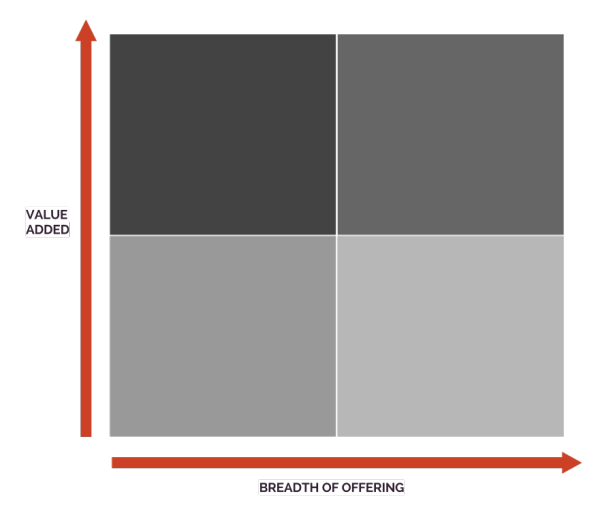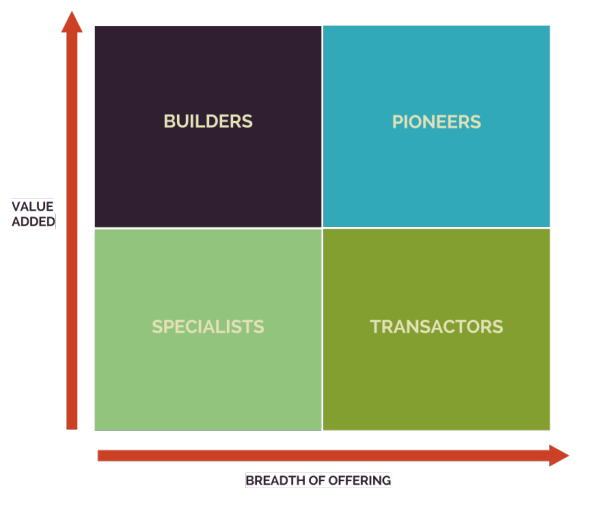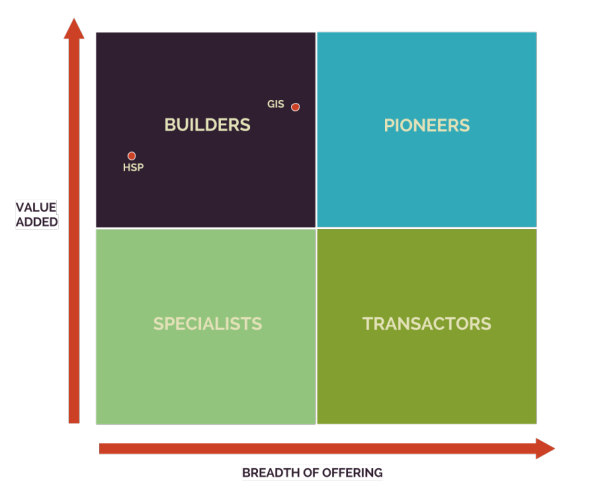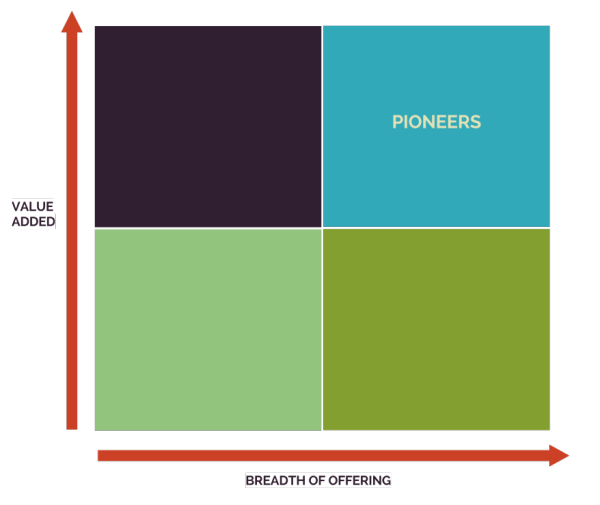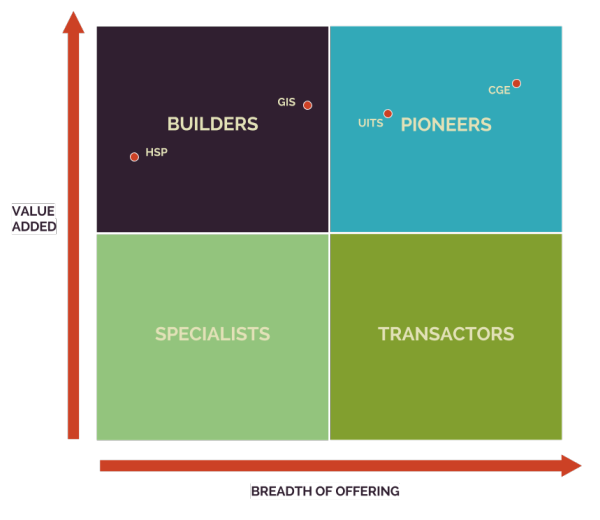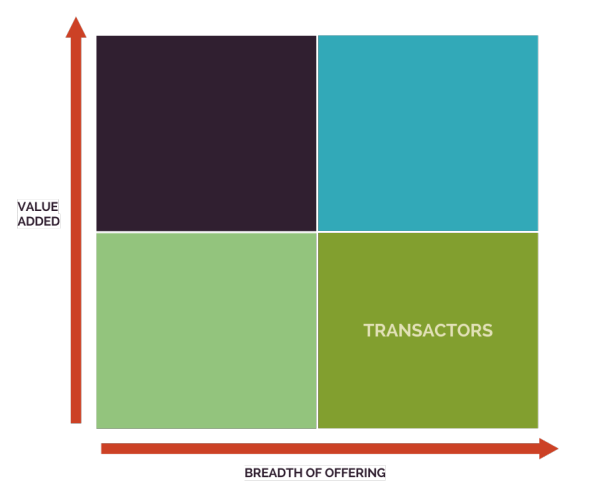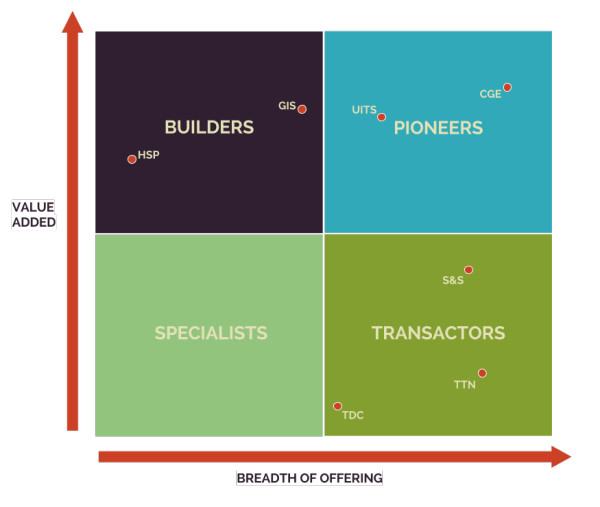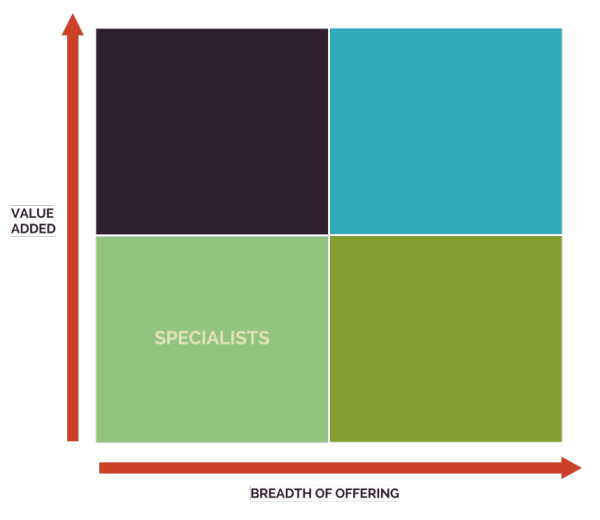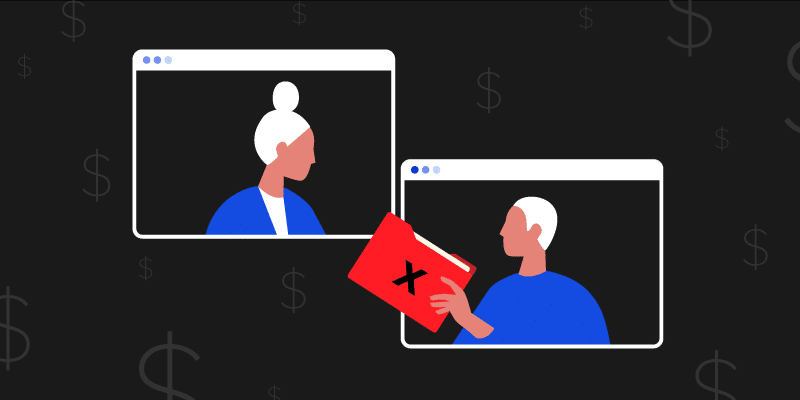Demystifying the Cloud Partner Ecosystem: How to Choose a Cloud Partner That Works For You
October 8, 2015
8 minute read

The shift to cloud IT is reshaping the way businesses and other organizations operate. It’s changing partner business models, rewriting job descriptions, altering IT infrastructures, and overhauling entire industries.
The benefits of cloud IT are clear, yet organizations are understandably transitioning with caution. They’re looking for a guide. They’re looking for a partner to lead them into the next generation of IT.
For an IT department tasked with leading their organization to the cloud, navigating the vast ecosystem of potential partners is a challenge in and of itself. Numerous partner programs, the shift to subscription-based software sales, and a growing number of cloud applications all create confusion in the Cloud Partner Ecosystem.
Still, you need to ensure the partner you choose fits your needs and has experience with cloud environments. One that understands that moving to the cloud isn’t just another IT project and knows that how you move to the cloud today will impact the entire future of your organization. That’s why choosing the right partner–or partners in many cases–is so incredibly important.
But how can you choose a partner that fits your needs when the Cloud Partner Ecosystem is blurry at best?
What is the Cloud Partner Ecosystem?
We quickly realized that in order to make sense of the Cloud Partner Ecosystem, we needed a scale to measure partners against–something that helped distinguish cloud partners from one another and illustrated the role they play in moving organizations to the cloud.
We looked at what mattered most: the value a partner adds and the breadth of its offering.
- Value Added: Value a partner adds through services as well as domain expertise, strategic vision, and cloud experience.
- Breadth of Offering: Total offering–from the variety of software or hardware it sells to the differing types of services it provides.
Using these as a measuring stick, we were able to identify four groups of partners.
- Pioneers: Most complete in offering and value added–these partners are leading the shift to the cloud. Typically, implementation and migration experts that also resell licenses for multiple cloud platforms.
- Builders: Have extensive market and cloud experience. Often work with large enterprises that need help with strategic and transformative work.
- Transactors: Sell huge catalogs of hardware and software licenses, often in bulk. Offer limited–or zero–services which hinders the total value that they can provide a customer.
- Specialists: Operate in niche industries and have a limited offering. Often excel at what they do; however, these partners are highly specialized so their value and offerings are limited.
Together, these four partner groups make up the Cloud Partner Ecosystem.
Builders
Why They’re Needed
Organizations look to these partners when they’re in need of highly complex projects that will lead to transformational change. Builders plan and architect at a very high level. In other words, these partners help organizations lay the foundation for a cloud-based future.
For Builders, it often goes beyond cloud guidance. Builders look at the business impact of how their clients adopt the cloud and help mobilize workforces to increase collaboration. Builders typically establish deep and ongoing relationships with their clients; and often times, these partners will even occupy desks within their customers’ offices.
Builders typically don’t sell software licenses to their clients and, as a result, limit their offerings to only providing services.
Pros
- Add a high amount of value through experience and domain expertise
- Perform highly complex work
- Can provide a strategic vision for an organization’s cloud pursuits
- Can act as an organization’s main advisor for cloud migration and adoption, security, infrastructure, operations, and more
- Understand the market extremely well
Cons
- Do not resell software licenses
- Do not offer consolidated billing
- Typically charge a higher hourly rate due to the complex nature of their work
- Typically only used by large enterprises with large budgets
- May need to subcontract work out to other organizations in areas outside of their expertise
Hypothetical Builders
Disclaimer: The following descriptions are hypothetical Builders. The companies described below are not real and any resemblance to real companies is purely coincidental.
Global Information Solutions (GIS)
Global Information Solutions (GIS) is a massive consultancy that considers itself a strategic advisor to its clients, typically large enterprises that come to GIS for help with transformational projects that will affect the future of their business.
GIS doesn’t do everything under the sun though. For example, it won’t sell software licenses–that actually slows them down–and GIS doesn’t typically help with the initial rollout of cloud applications; it will outsource implementation work to a company more specialized in that area.
Hero Security Partners (HSP)
Hero Security Partners (HSP) helps organizations in highly-regulated industries build secure infrastructures. Finance, retail, government, and healthcare organizations also rely on HSP to conduct routine and highly technical security audits.
Pioneers

Why They’re Needed
Organizations turn to Pioneers when they need to buy software licenses and need help with the implementation, migration, or integration of specific cloud platforms. Pioneers are the first line of support for the organizations they work with.
Common services that Pioneers provide include data migration, custom development work, audits or reviews, and ongoing training and support.
Pros
- Can be an organization’s one-stop shop for software procurement and services
- First line of support
- Deep technical expertise in the cloud platforms they support
- Provide value-added services like ongoing support, training, and consolidated billing
- Form deep and long-lasting relationships with clients
Cons
- Specialize in only a couple cloud platforms in order to maintain a high level of technical expertise
- Not as long-term or strategically focused as Builders
Hypothetical Pioneers
Disclaimer: The following are descriptions of hypothetical Pioneers. The companies described below are not real and any resemblance to real companies is purely coincidental.
Cloud Guide Experts (CGE)
Cloud Guide Experts (CGE) sells licenses for multiple SaaS products and also offers value-added services. For this reason, CGE views itself as a full service partner.
How does CGE help its clients? First, CGE sells its clients licenses for a variety of cloud platforms; then it helps to implement and integrate them. After implementation, CGE will continue to offer valuable services like support, training, and custom development.
United IT Services (UITS)
United IT Services (UITS) provides enormous value to its clients by remotely managing all aspects of IT. When organizations don’t have the resources to manage their own IT, they’ll turn to UITS. UITS provides IT services like support, security, training, data recovery, and more.
Transactors
Why They’re Needed
Transactors have been around since before the cloud was the “it” term in IT. They are a one-stop shop for an organization’s procurement needs. Today, that includes everything from: computers, hardware, software, and peripherals.
Some Transactors won’t sell directly to individual organizations (because they’re too small). Instead, they will sell software licenses in bulk to other partners that then sell them directly to customers (this is called a two-tier distribution model).
Pros
- Sell an unmatched catalog of software, hardware, and peripherals
- Buy licenses and hardware in bulk from vendors so they can offer the best prices
- Can potentially serve as your one-stop shop for software, hardware, and peripherals
- Can offer cloud services and hardware in bundles
- Often offer consolidated billing
Cons
- Do not typically offer services
- Lack technical and domain expertise due to the wide variety of products they sell
- Reduced customer relationship after sale
- Lack support after sale (customers will need to go through the vendor for support)
Hypothetical Transactors
Disclaimer: The following are descriptions of hypothetical Transactors. The companies described below are not real and any resemblance to real companies is purely coincidental.
Software & Services (S&S)
Software & Services (S&S) is a Transactor that’s expanding its offering to include some services. This isn’t typical for a company of its type. Yet, S&S views providing value-added services as crucial to the future success of its organization. Today, S&S only offers support and training along with its massive catalog of software, hardware, and peripherals.
Total Tech Needs (TTN)
Total Tech Needs (TTN) is a distributor. TTN offers the most extensive catalog of any Transactor, but it doesn’t offer any support or training–and it doesn’t plan to. TTN views itself as a sales engine and its business model isn’t changing anytime soon.
TelStar Data Co. (TDC)
TelStar Data Co. (TDC) is a telecom giant. It sells a small portfolio of cloud services to its massive customer base, which it gained by providing telecom services. TDC adds value by serving as a single point of interaction for its clients’ cloud, telecom, and network needs.
Specialists
Why They’re Needed
Specialists play a number of very specific roles in the cloud partner ecosystem. Some Specialists are simply affiliates, which help vendors sell their software through advertisements on the web. Others provide more value, servicing organizations in niche industries or by providing services that are uncommon.
Pros
- Can be highly focused and as a result very knowledgeable
- Simple offering
Cons
- Lack many of the benefits that other partners provide
- Extremely limited offering
- In the case of affiliates, there is almost no customer relationship
Hypothetical Specialists
Disclaimer: The following are descriptions of hypothetical Specialists. The companies described below are not real and any resemblance to real companies is purely coincidental.
Focused Platform Group (FPG)
Focused Platform Group (FPG) specializes in Office 365 and provides limited services, including initial implementation and training. However, because FPG is extremely good at what it does, it has successfully carved a niche for itself. FPG has no plans to complicate its offering by expanding into new services or by working with more cloud platforms.
Business Affiliate Network (BAN)
Business Affiliate Network (BAN) teams up with software vendors to sell their solutions through an affiliate network of participating websites. BAN typically takes a percentage of the initial sale of a vendor’s solution, or a referral fee for leads generated.
Movement of the Partner Ecosystem
The partner ecosystem is anything but static. Partners are constantly maneuvering themselves in the direction that’s best for their future.
Leading partners are moving to the upper right corner of our chart, expanding their offerings by actually selling software licenses in addition to providing value-added services, and packaging all of this into a one-stop shop type of service that helps their customers make the most of key cloud platforms like Google Apps and Office 365.
Today, the majority of Microsoft partners fall into the Builders quadrant. But with new initiatives like the Cloud Solution Provider (CSP) program, which incentivizes Microsoft partners to sell Office 365, we believe Microsoft partners will begin migrating en masse to the Pioneers quadrant.
Many Google Apps partners already resell licenses and offer services, placing them in the Pioneers quadrant. Yet there is no individual partner that sits comfortably in the top right corner of our chart.
As the Cloud Partner Ecosystem continues to grow and evolve, we expect to see more partners enter the Pioneers quadrant. By offering more value-added services and by becoming cloud platform resellers, partners can become the gateway through which organizations enter the cloud, and the expert guide that helps transform the way their customers work in the cloud.



